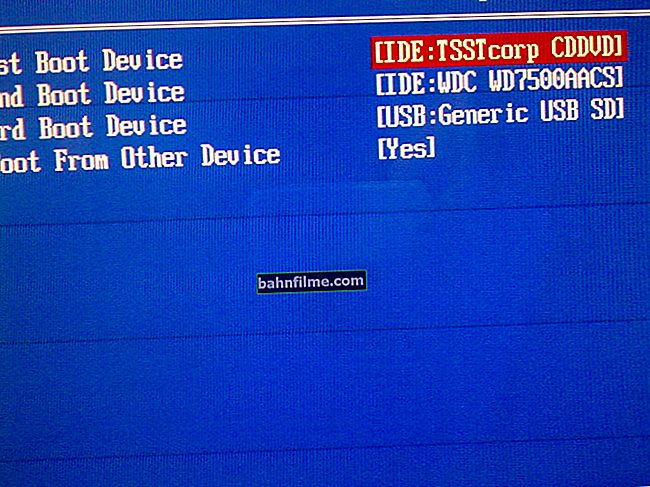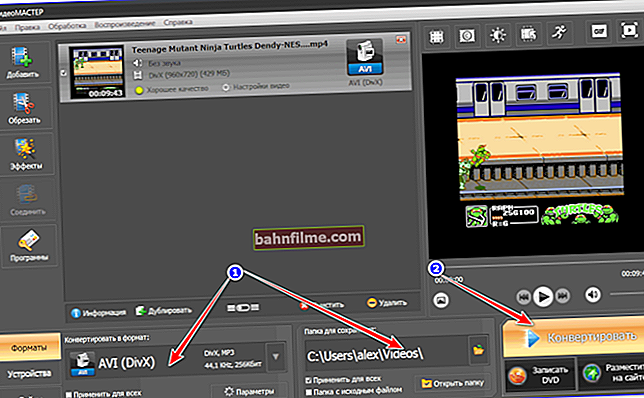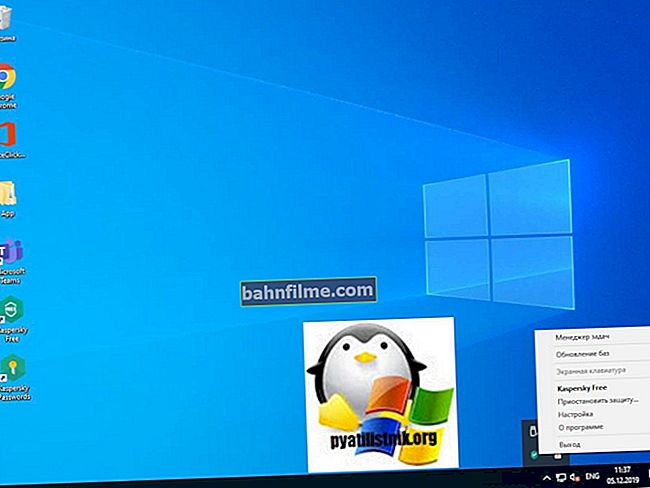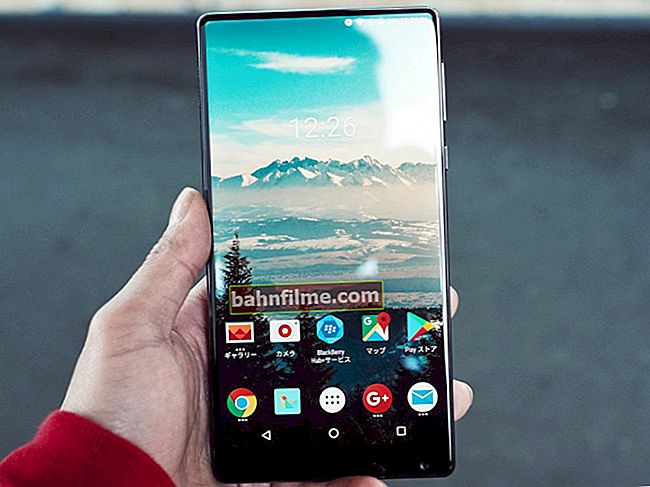
User question
Hello.
I have a rather old computer (already 8-10 years old, I took it from my hands especially for giving). I recently reinstalled Windows on it and the screen started to flicker a lot. Eyes get tired quickly, especially on a white background (very noticeable).
How can this blinking be removed?
PS The disk from the previous owner with the drivers - completely "rummaged" and installed everything that was on it. Did not help...
Good day!
In general, both very expensive monitors and cheap ones (both old and new) can flicker. And many users are very mistaken, thinking that such disadvantages of monitors are somewhere in the past. In fact, your eye may not see flickering, but it will (for example, you can indirectly notice this by how quickly your eyes get tired)! I will show examples below.
As for the author of the question, the reason for the flickering, judging by his description, is associated with the low refresh rate of the screen (especially, this is true on old PCs where CRT monitors are used (these are such "thick" ones, see on the right in the preview picture)) ... As a rule, to eliminate this problem, it is necessary to install the appropriate drivers for the monitor and video card, and then configure them correctly.
In the article I will analyze these and other reasons in more detail. So...
By the way, I want to add here ... If, among other things, ripples are observed on your screen, vertical and horizontal stripes are running around, distorting the image (as in the example below), then you better read this article first: //ocomp.info /ryab-i-polosyi-na-ekrane.html. In it, I pointed out the main reasons for this "behavior" of the monitor / PC ...

Photo of a monitor with vertical stripes and ripples (as an example)
*
How to eliminate flickering
By the way, there is a very good way, find out if your screen is flickering (blinking) a lot. Most modern smartphones are equipped with a camera: so, turn on the camera and just focus it on the screen (you don't need to take pictures, just watch). It will perfectly show if your monitor is flickering.
As a rule, if something is wrong, you will see on your smartphone how vertical / horizontal stripes run (usually, from top to bottom (from left to right)). This is the very flicker we're talking about. See example below.

Monitor 1 and Monitor 2 - Note the stripes on the second (test using your phone)
A few words about modern and CRT monitors
Modern monitors, as I said above, can also flicker (moreover, even if you just brought it from the store, and just from the glance, it is imperceptible). To see if there are these stripes, use the smartphone's camera, or with an ordinary pencil (they need to quickly wave in front of the screen and see how his silhouette will be displayed (see example below)).

Horizontal stripes

Backlight flicker
This may happen due to the peculiarities of the monitor backlight operation (this is not a marriage, and for this reason the monitor cannot be returned! To protect yourself from such models, you need to personally test the device in a store). As a rule, a similar featureappears when dimming!
Those. the monitor can work fine at 80% brightness, but when you try to set it to 40%, you will see (on a smartphone) how the screen starts to flicker (and especially in my opinion, this is not good).
As a rule, better monitors (in this aspect) use eye protection technologies (Flicker Free, SoftBlue, SmartImage, etc.).

Eye protection technology
But, I personally came to the conclusion that all this does not give a 100% guarantee. And the best way out is to check the operation of the monitor upon purchase - i.e. ask the seller to turn down the brightness, open a blank white sheet and point the camera (or buy something specific, which you have already looked at in reviews and tests).
If you already have a flickering monitor, then, as an option, you can try to fix the problem like this: add brightness (only here you should also exercise measure), and increase refresh rate (if possible). Usually, if you decrease the screen resolution, you can increase the refresh rate.
To help!
1) How to change the screen resolution - //ocomp.info/razreshenie-ekrana.html
2) How to adjust screen brightness - //ocomp.info/ne-reguliruetsya-yarkost.html

Classic CRT Monitor
As for CRT monitors, then at a frequency below 85 Hz screen refresh - it is highly discouraged to work (the eyes get tired quickly from such an image)! On newer LCD monitors, it is allowed to work at 60 Hz (since the principle of their operation is different).
But I note that, nevertheless, if your monitor is capable of operating at a higher frequency, it is recommended to set it exactly. Below I will show you how to find out the current frequency, and how to change it ...
Adjusting the refresh rate of the screen
Method # 1
Press the button combination Win + R , a small window should appear "Run" ... In the "Open" line enter the command desk.cpl and press Enter.

Opening screen properties
Next, you should open the display settings: depending on the version of the Windows used, the settings screen may differ slightly. For example, in Windows 10, you need to open the "Graphics adapter properties" link.

Graphics adapter properties
In the subsection "Monitor" there should be a tab "Screen refresh rate". Actually, you click on it and change the frequencies to the highest that your monitor supports.

Monitor, 60 Hz
An important point!
If you do not have drivers installed on your monitor or video adapter, then almost certainly you will not be able to set any modes other than 60 Hz (even if your monitor supports them!). In this regard, I recommend using special utilities for auto-updating drivers (they will automatically check all your hardware and update everything that is needed).
Method # 2
If you have drivers for the video adapter, then just right-click on any free space on the desktop, and then select their settings in the context menu that appears (in my case, these are "Intel Graphics Settings").

Intel graphics settings
As a rule, in the main section you can specify the refresh rate, resolution, adjust brightness, scaling and other parameters.

Update frequency
About drivers
If you installed all the drivers from the disk (which came with your PC), then it is far from the fact that all of them correctly "got" into the system. Often, when, after changing the Windows OS, old drivers, even if they can be installed, they do not work correctly ...
To check if you have a video driver on your system, open device Manager (for this use the combination Win + R , then the command devmgmt.msc ).

Launching Device Manager - devmgmt.msc
In Device Manager, expand two tabs: Display Adapters and Other Devices.
If you have a video driver installed, then in the "Video adapters" tab you should see the name of your video card (without exclamation marks).
If there is nothing in the "Video adapters" tab, or "Standard VGA video adapter" appears (or "Video controller VGA compatible") - then there is no driver in your system. An example is shown in the screenshot below.

Device manager - everything is OK with the drivers, and the driver did not get up
Actually, I have a "big" article on my blog dedicated to updating the video driver. I recommend reading it if you have a problem with this.

How to update the driver for an AMD, nVidia and Intel HD graphics card: from A to Z
ADDITION!
By the way, after installing modern Windows 10, you may be faced with the fact that the driver in your system will be (ie the device manager will show you that everything is "OK") , but you will not find links to its control panel. In this case, you also need to reinstall the driver by downloading it from the official website (see the link to the instructions above).
The link to the video driver settings is usually present in the tray (see the screenshot below).

Driver Control Panel Link
You can also find the link in the Windows Control Panel if you switch the display of icons to "Large icons" (example below).

Control Panel
About cables and cords
The problem with the flickering picture on the monitor screen may be due to a damaged cable. Often, by the way, when pets damage him ...
To begin with, I recommend that you carefully examine the cable for any visible damage. If there is a similar one, try replacing it.

Broken USB cable
By the way, it is very desirable to fix the cable (at least with scotch tape (the ideal option is special clamps, see photo below)) so that it does not "dangle" in a slight draft, when someone passes by, or you sit down at a computer desk ...

Special guides (clamps) that securely fix the cables
About malfunction of the monitor, video card
Also, I can not help but note that the distortion of the picture on the screen often signals about hardware malfunctions (that is, there is a problem in the hardware). It is not always easy to diagnose for sure which one ...
To begin with, I recommend connecting your computer (laptop) to another monitor; and the current monitor to another PC. Thus, it will be possible to immediately find out where to look for the cause of blinking on the screen: in the system unit or in the monitor (I apologize for the tautology).
As an add-on!

How to connect a monitor to a laptop - //ocomp.info/kak-podklyuchit-monitor-k-noutbuku.html
As for the video card, to check it, you can use special utilities that can conduct a stability test. You can find out how to carry it out from the article below.

Checking the video card for performance, test for reliability and stability - //ocomp.info/stress-test-videokartyi.html
*
PS
I know that many people do not pay attention to various flickering and distortions on the screen. However, purely my opinion - you shouldn't leave it unattended! The fact is that a poor-quality picture on the monitor not only spoils the impression and emotions (God would be with them  ), but also affects our vision! Eyes quickly get tired, tense, start watering, etc. Extra health problems, as if none of us need it ...
), but also affects our vision! Eyes quickly get tired, tense, start watering, etc. Extra health problems, as if none of us need it ...
All the best!
Add-ons are welcome ...
Article edited on 12/31/19









